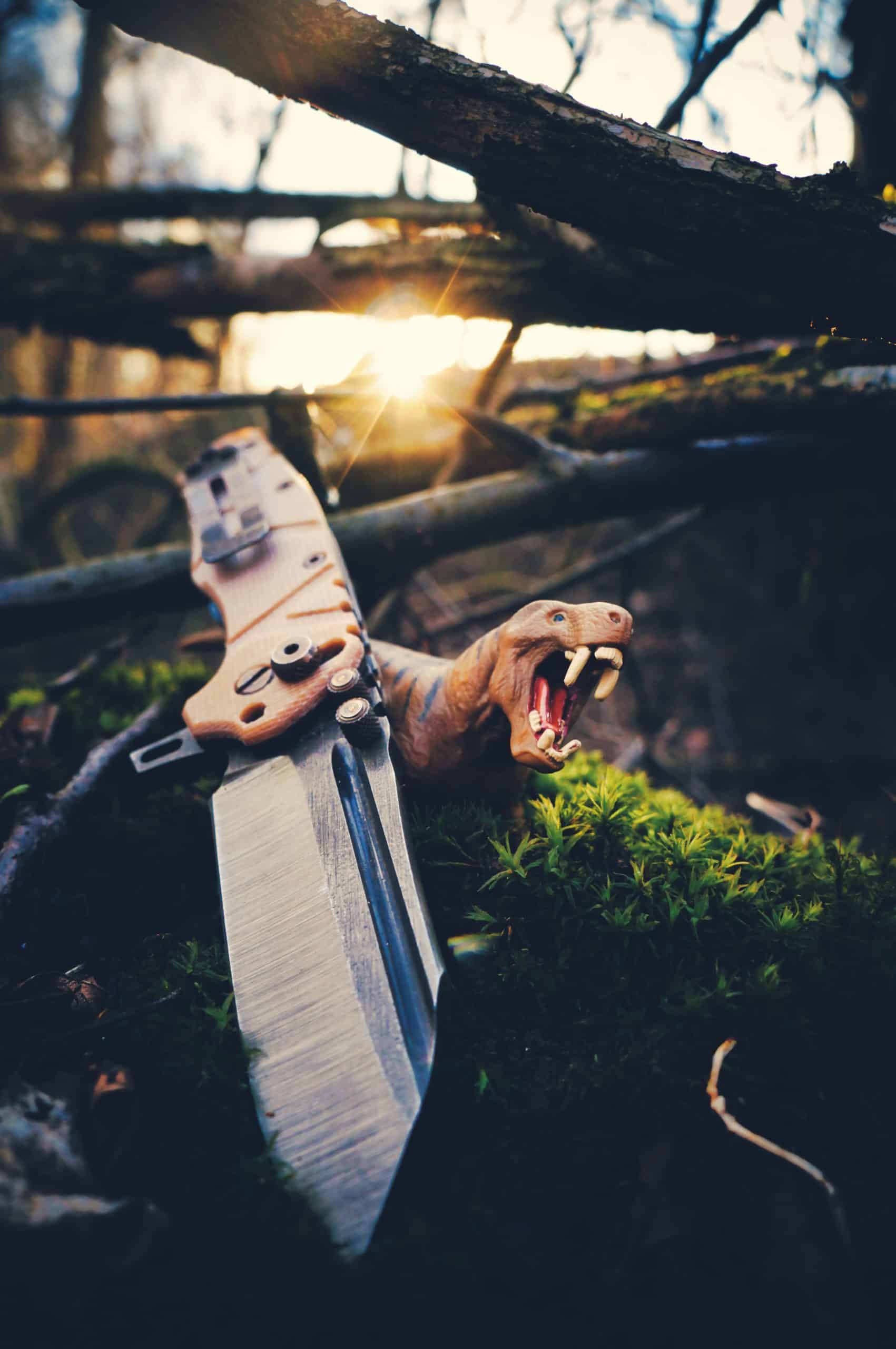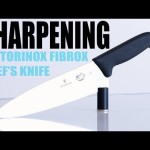
Introduction to Pocket Knives
Pocket knives have been around for centuries and have been used for a variety of purposes. Their use dates back to prehistoric times, when humans first began utilizing knives for everyday tasks such as cutting plants and meats. Since then, pocket knives have developed and evolved into sleek tools for both utilitarian and recreational uses.
The anatomy of a pocket knife typically consists of a handle with one or more folding blades housed within it. The handle is usually held closed by some sort of locking mechanism, such as a slipjoint, liner lock, or frame lock. Traditional pocket knives may utilize two or three separate springs placed between the handle scales to keep the blades open (unless locked). Knife products today come in a variety of types such as multi-function models that feature integrated scissors and can openers. The most common type of blade found on standard pocket knives are drop point blades; however traditional clip point blades cannot be overlooked either.
Pocket knives offer many advantages over other folding cutting tools such as they are easy to carry and lightweight yet remain durable. They provide convenience as many modern-day models include multi-tool components that can be used in emergency situation repairs such as a broken belt buckle or tightening screws on eyeglasses frames. Maintenance costs associated with pocket knives are usually minimal since simply wiping them down with an oil cloth allows them to last for years with minimal servicing needed. Additionally, depending upon their intended use; tactical models exist which offer enhanced features beyond the aforementioned benefits. No matter what type of pocket knife model is chosen, owning one offers practicality in even mundane daily tasks whether it be opening letters or apples for lunch!
Anatomy of a Pocket Knife
Blade: The blade is the sharp portion of the pocket knife, typically made from steel, and can be serrated or plain. Different blades are available in various lengths for different uses such as precision cutting and quick slicing. Commonly found styles of blades include clip point, drop point, spey and pen.
Handle: The handle of a pocket knife can be made from a variety of materials including wood, plastic, or stainless steel. It should fit comfortably in the hand and provide an ergonomic grip for easy manipulation. Styles can range from smooth handles to those with distinct ridges to enhance grip security when using the knife. Some pocket knives will also feature a locking mechanism, which is useful to hold the blade open while in use.
Bolster: A bolster is often located on either side of the handle, between it and the blade itself. This part is usually made out of brass or another metal alloy, and functions as a protective guard to ensure that fingers are kept away from the sharp edge when in use.
Lanyard Hole: While not present on all pocket knives, some models may feature an additional hole at their base (by the handle) known as a lanyard hole. This affords you the ability to attach a string or cord towards it; useful for easy retrieval if you ever need to reach down into pockets or tight compartments while keeping your knife close at hand without worry of accidentally dropping it along the way.
Variations in Knife Sizes & Blade Types: Pocket knives may range in size significantly depending on their intended purpose- ranging from very small tools suitable for small everyday tasks such as opening letters right through to larger folding hunting knives built with robust handles and thick large blades designed up tackle larger-scale jobs like field dressing game animals after hunting trips or carving wood blocks outdoors by campfire light. Additionally they may come equip with various types of blades; common ones including straight blades which offer solid straight edge performance; serrated edges which afford superior bite when cutting through tougher materials like rope and leather; fully reciprocal slideable blades for detailed whittling and detail work; hook curved bottom tips used mainly for skinning works etc etc
Hand Design Variations: Handle designs too can vary significantly from model to model- some coming adorned with beautiful artwork etchings such as intricate scrolling patterns upon natural wood grains alternatively some having thicker more ergonomic grips complete with rubber composite overlays offering superior rotational control when slicing things up!
Parts of a Pocket Knife
Blade: The blade is the key feature of every pocket knife. It can be made from stainless steel, carbon steel, aluminum alloy, or even titanium. Depending on its intended purpose, there are many shapes for pocket knife blades that include drop point, clip point, tanto, sheepsfoot blade and more.
Handle: Typically constructed with either plastic (cellulose acetate or injection molded), bone or antler scales these parts of a pocket knives form the handle shape. Depending on the material used they often provide great grip and an attractive aesthetic.
Liner Lock or Frame Lock: These mechanisms are found on both folding knives and multitools and are responsible for keeping the blade securely in place when opened – acting like a latch to keep it closed as well when folded. A liner lock uses two flat liners inside the frame while frame locks use just one.
Spring: Generally found on traditional folders this mechanism is what allows them to open and close so easily – acting as a counterbalance between the blade and handle when opened or closed. The spring needs to be strong enough so that it won’t slip out of position but also soft enough to allow for easy opening and closing without extra stress applied during use.
Rivets: Small pins which connect two sections together—usually lids onto handles—these pieces of hardware provide an important structural element for smaller pocket knives as well as larger ones, doing things such as helping maintain balance within handles as well as providing added leverage when needing extra strength from springs.
Care and Maintenance Tips for Pocket Knives
Cleaning: Regularly cleaning and inspecting your pocket knife will ensure that it remains in top condition for a long time. Start by wiping down any exposed metal parts of the knife, particularly the blade, with a cloth dampened with a mild detergent solution. This will help to remove dirt and oils from the blade and handle. Be sure to rinse off all remaining soap residue, as this can damage sensitive metal parts.
Lubrication: Each part of your pocket knife should be lubricated periodically, including the blade pivot point, lock mechanism, liners and screws. When lubricating your pocket knife, use food-grade mineral oil. This type of oil will not draw dust and dirt fragments like other synthetic oils do; it won’t break down when exposed to heat or water either. To lubricate your pocket knife correctly; apply a few drops of oil on each metal part, and then use a clean cloth to spread out the oil evenly along these components.
Sharpening: Sharpening is necessary due to regular wear-and-tear on blades caused by cutting tasks. Pocket knives typically need sharpening after several months of use. Remember that sharpening should not be confused with honing, which uses abrasive materials to buff away metal particles so that then blade holds its edge longer without needing to be sharpened again right away. For best results you may want to purchase a specialty sharpening tool or take your pocket knife to a professional sharpener to attain optimum accuracy and maximum cutting ability.
Corrosion Prevention: Corrosion is caused by oxidation and can lead to rust accumulating on pocket knives if left unchecked; it greatly reduces the life expectancy of any blade and should be prevented wherever possible with regular maintenance routines such as proper lubrication. In addition use protective sprays specifically designed for metal surfaces on all exposed steel elements of your pocket knife for extra protection against corrosion or oxidation caused by humidity or other elements found in this environment .
Safety Considerations when Carrying a Pocket Knife
When carrying a pocket knife, it is important to be aware of local laws regarding the carrying of knives. In many places, it is illegal to carry certain types of knives with blades over 3-inches long within city limits. It is possible you could be arrested and/or fined if caught carrying an unlawful knife without the proper license or permit.
It is also important to consider common safety precautions when carrying a pocket knife. For example, while the blade should always remain clear of any body parts while in your pocket or on your belt, you should also make sure to keep it away from other objects that may dull or damage its edge when carried in a pocket or bag where other items may come into contact with it. Additionally, make sure that your pocket knife is securely closed before placing it in a pocket to prevent unintentional opening and potential injuries.
Finally, there are some recommended methods for proper carrying of pocket knives. If you choose to carry a pocketknife on your belt or in the waistband of your pants, use an appropriate sheath or holster for concealment and protection from accidental opening and injury. You can also affix a lanyard loop to the knife handle so that you can attach it to keys, bags, etc., as another method for preventing unintentional use and/or loss of the knife.
Pocket Knife Applications
Pocket knives have an incredible array of uses, from performing everyday tasks such as opening boxes and cutting string, to larger jobs such as slicing through small branches or even skinning game during a hunting trip. Some of the most common tasks a pocket knife can help with include:
– Opening boxes
– Unscrewing tight lid on jars/bottles or other containers
– Cutting cords/twine/rope
– Making kindling for a fire
– Sharpening pencils and sticks
– Reshaping and sharpening fishing hooks
– Fashioning spears, arrows and other tools in the wild
– Trimming extra material off clothing or similar fabrics.
Some accessories to add to your pocket knife includes multi tools to increase functionality, such as screwdriver heads, bottle openers, saws, scissors and file heads, helping you tackle complex jobs with ease. Other addons include various carrying options (cases or holsters), different blade materials (stainless steel or carbon fiber), sharpening stones and honing oil for regular maintenance of your blade.
Conclusion
The Anatomy of a Pocket Knife is an incredibly useful and helpful tool. A pocket knife can be used for a variety of tasks ranging from simple everyday use such as crafting, to emergency applications such as opening stuck windows or doors. It offers an array of blade sizes and configurations, making it an ideal multitool for an individual or work crew. Many people opt to purchase one with multiple attachments such as a saw, scissors, or corkscrews. Additionally, one should invest in a carrying case that fits their chosen design and style perfectly.
The potential benefits of owning a pocket knife are vast; they’re durable, convenient and versatile – perfect for carrying out any job that requires cutting or slicing material with precision. There are endless variations on the size, shape and design of pocket knives which allows you select from something more basic to something more ornate in terms of functionality. With the wide range of styles available, you should be able to find one to suit your needs and preferences.
In conclusion, it’s clear that the anatomy of a pocket knife has much potential with its numerous uses and applications from basic tasks to emergency use. Every “pocket knife person” has different requirements depending on their lifestyle and preference; so it is important for each individual to select the model that will fit their needs best. Further research into this topic including reviews from experienced users should help anyone considering investing in their own pocket knife make their decision easier than ever before.















